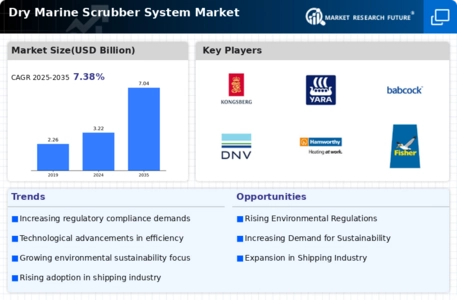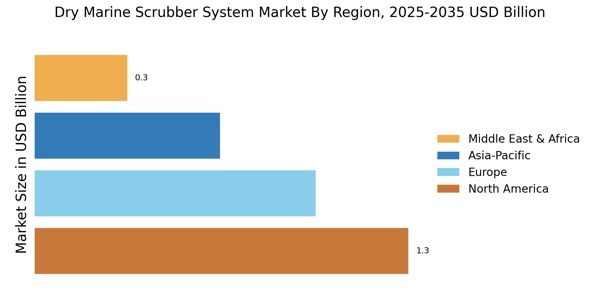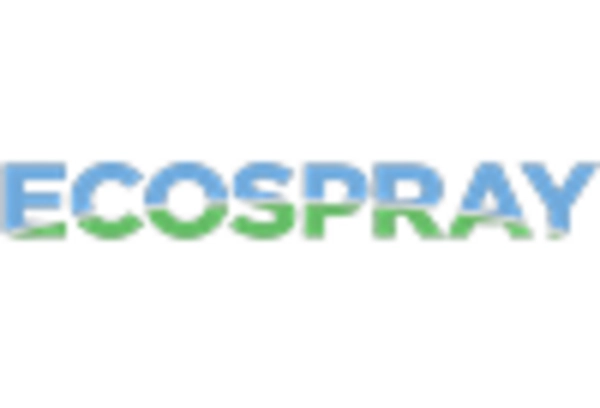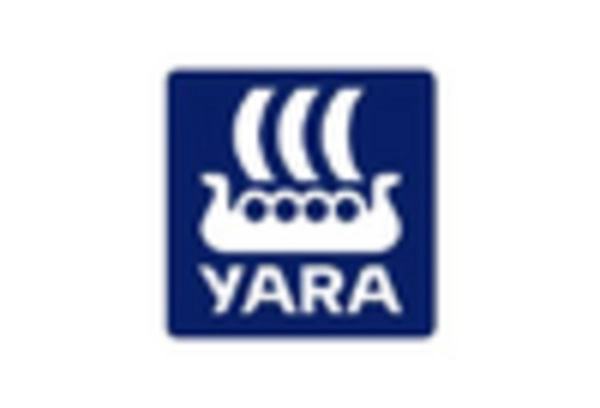Shift Towards Sustainable Practices
The Dry Marine Scrubber System Market is increasingly influenced by a broader shift towards sustainable practices within the maritime sector. As stakeholders become more aware of environmental impacts, there is a growing emphasis on adopting technologies that minimize pollution. Dry marine scrubbers are viewed as a sustainable solution, allowing vessels to operate within regulatory limits while reducing their carbon footprint. This trend is further supported by the rising demand for eco-friendly shipping practices from consumers and businesses alike. Market data indicates that the adoption of scrubber systems is expected to rise, with many shipping companies committing to sustainability goals. This shift not only enhances the reputation of companies but also aligns with global efforts to combat climate change, thereby driving the growth of the dry marine scrubber system market.
Regulatory Compliance Driving Adoption
The Dry Marine Scrubber System Market is experiencing a surge in demand due to stringent regulatory frameworks aimed at reducing sulfur emissions from ships. Various international regulations, such as the International Maritime Organization's (IMO) 2020 sulfur cap, mandate that vessels limit sulfur oxide emissions to 0.5% from the previous 3.5%. This regulatory pressure compels ship operators to invest in dry marine scrubber systems as a viable solution to meet compliance requirements. As a result, the market is projected to grow significantly, with estimates suggesting a compound annual growth rate (CAGR) of over 10% in the coming years. The need for compliance not only drives the adoption of scrubber systems but also encourages innovation within the industry, as manufacturers strive to develop more efficient and cost-effective solutions.
Increasing Shipping Activities and Trade
The Dry Marine Scrubber System Market is poised for growth due to the increasing shipping activities and trade across various regions. As global trade continues to expand, the demand for shipping services rises, leading to a higher number of vessels operating in international waters. This increase in shipping activities correlates with a greater need for compliance with environmental regulations, particularly concerning emissions. Consequently, ship operators are more likely to invest in dry marine scrubber systems to ensure they meet the necessary standards. Market projections suggest that the volume of scrubber installations will increase in tandem with the growth of the shipping industry, potentially leading to a market expansion of over 15% in the next few years. This trend underscores the interconnectedness of trade growth and environmental compliance in the maritime sector.
Economic Incentives and Funding Opportunities
Economic incentives and funding opportunities are emerging as key drivers in the Dry Marine Scrubber System Market. Governments and regulatory bodies are increasingly offering financial support and incentives to encourage the adoption of cleaner technologies in the maritime sector. These incentives may include grants, tax breaks, or low-interest loans aimed at reducing the financial burden on ship operators investing in scrubber systems. Additionally, the availability of funding from environmental organizations and initiatives further supports the transition towards sustainable practices. As these economic incentives become more prevalent, they are likely to stimulate demand for dry marine scrubber systems, making them a more attractive option for ship owners. This trend could lead to a notable increase in market penetration, as financial considerations play a crucial role in decision-making processes within the industry.
Technological Advancements Enhancing Efficiency
Technological advancements play a pivotal role in shaping the Dry Marine Scrubber System Market. Innovations in scrubber design and materials have led to systems that are more efficient and easier to operate. For instance, the integration of automation and real-time monitoring systems allows for better performance tracking and maintenance scheduling, thereby reducing operational costs. Furthermore, advancements in the treatment of wash water have improved the environmental footprint of scrubbers, making them more appealing to ship operators. As these technologies continue to evolve, they are expected to enhance the overall efficiency of scrubber systems, potentially increasing their market share. The market is likely to witness a shift towards more sophisticated systems that not only comply with regulations but also optimize fuel consumption and reduce emissions.


















Leave a Comment